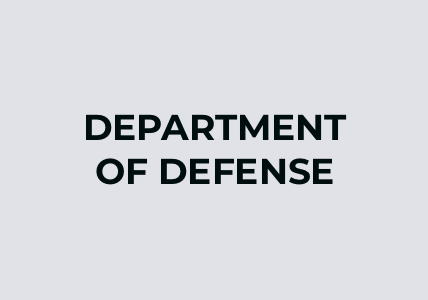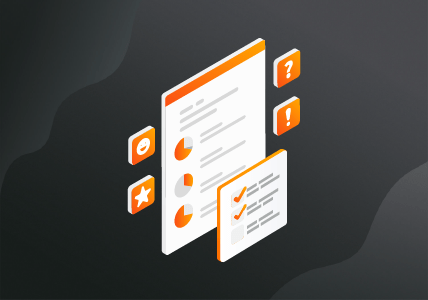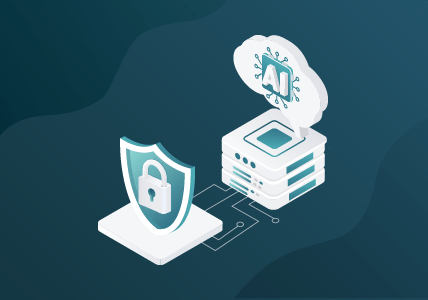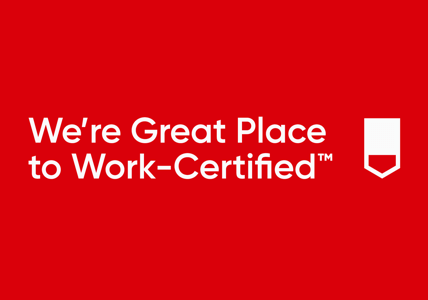The Future of Cloud Security: Cloud Security Trends
As organizations increasingly move to cloud environments, the cloud security landscape is growing faster than ever. Traditional security infrastructures are no longer advanced enough to handle the unique vulnerabilities of complex environments, and cloud security is rapidly evolving to keep up.
This article explores the key trends shaping cloud security and those that are essential for protecting your organization.
- Why Cloud Security Matters More Than Ever
- Top Cloud Security Trends in 2025
- Emerging Technologies Shaping the Cloud Security Market
- Challenges in Adopting New Cloud Security Trends
- How to Prepare for the Future of Cloud Security
- Capitalize on Emerging Cloud Security Trends
Key Takeaways
- Cloud security is ever evolving to handle the changing needs of increasingly complex cloud environments
- Organizations are adopting security measures like Zero Trust architecture, AI-powered cloud security tools, and cloud-native workload protection programs
- Emerging technologies like confidential cloud security, homomorphic encryption, and quantum-safe cryptography are making waves in the cloud security market
- To prepare for the future of cloud security, organizations need to invest in thorough training, modern tools, and strong vendor partnerships
Why Cloud Security Matters More Than Ever
Traditional network security isn’t equipped to handle the security concerns of cloud environments, from their always-expanding attack surface to the growing complexity of multi-cloud environments.
New data privacy laws like GDPR, HIPAA, and more also make cloud security essential. Organizations subject to these regulations must take measures to protect their data and keep their cloud environment secure.
For organizations with multi-cloud environments, perimeter-based security is no longer enough. Cloud environments have distributed resources, ever-changing workloads, and countless access points. Cloud-native security is a must.
Top Cloud Security Trends in 2025
Wondering what the latest trends are in cloud security? Read on to discover what we’re seeing in 2025.
1. Zero Trust Becomes the Default Security Model
The first cloud security trend that’s here to stay is a transition to Zero Trust architecture. This approach states that nothing — user, device, or application — should be automatically trusted. Instead, these security models require continuous authentication with each new interaction.
Zero Trust architecture addresses increasingly sophisticated attacks, including compromised identity attacks and ransomware. Instead, everyone is assumed to be an attacker until they can be verified.
2. Cloud-Native Security Tools Go Mainstream
Another trend we’re seeing in cloud security is a shift from legacy tools to CSP-native solutions. As legacy tools become no longer sufficient in cloud environments, organizations are increasingly moving towards security tools embedded into cloud infrastructure. Leading cloud service providers like AWS and Google Cloud offer security tools built directly into their platforms.
DevSecOps is also on the rise. Rather than adding on security at the end, teams are integrating it throughout the software development cycle. The security infrastructure is written directly into the code and enforced automatically, rather than being an afterthought.
3. Rise of AI and ML for Threat Detection and Response
AI and ML are trending just about everywhere right now, and cloud security market trends are no different. These tools can analyze large volumes of information to establish a baseline and more accurately detect anomalies in real time. Rather than alerting after an attack has occurred, AI and ML identify suspicious behavior before it can become a problem.
AI can also prioritize vulnerabilities based on historical attacks. That way, teams can focus on the most critical issues first. It also minimizes false positives and enacts automated responses to address real security threats.
4. Data Security and Governance Take Center Stage
Many of today’s cloud security trends surround protecting data and governing its usage. Data security priorities include data discovery, identifying where sensitive data lives, and classification, protecting that data. Whether at rest or in transit, data should always be encrypted.
Cloud-native security tools also focus on protecting data at each step of its lifecycle, from creation to archive. Data sovereignty, the requirement that data be subject to the laws and regulations of the country where it’s stored, is also a priority. To meet these requirements, organizations often use practices like geo-fencing, localized storage, and strict access control.
5. Consolidation of Cloud Security Platforms (CNAPP, SSE, SASE)
As cloud environments grow in complexity, hybrid cloud security is trending towards unified and integrated security platforms like SNAPP (Cloud-Native Application Protection Platform), SSE (Security Service Edge), and SASE (Secure Access Service Edge).
The “single pane of glass” approach also helps simplify security. This is a single interface that provides centralized visibility and control in a single view. Teams can have total network visibility and monitor workloads, users, threats, and more in one location.
6. Growing Focus on API Security and Workload Protection
Increasingly distributed networks rely more and more on APIs, which have become prime vectors for cyberattacks. API security is growing in importance by the day.
CWPPs (cloud-native workload protection platforms) are another cloud security focus in 2025. These tools provide comprehensive security capabilities that protect applications, data, and infrastructure within the cloud.
7. Regulatory Compliance and Industry-Specific Standards
Organizations are also trending towards cloud security solutions that address industry-specific needs, like the healthcare or finance industries. Cloud providers create compliance-ready infrastructure that offers turnkey solutions to industry requirements.
Emerging Technologies Shaping the Cloud Security Market
In addition to these security trends in cloud computing, a number of new technologies are making waves in the cloud security market. These include:
- Confidential computing: While traditional data encryption secures data at rest and in transit, confidential computing secures data while it’s being processed. It does so by performing computations in a secure environment known as a Trusted Execution Environment, which prevents unauthorized access.
- Homomorphic encryption: Homomorphic encryption is a new technology that enables data to be utilized without being decrypted first. It allows sensitive data to be processed without being revealed.
- Quantum-safe cryptography: Also known as post-quantum encryption, this technology provides greater protection against cybersecurity attacks.
- Blockchain for identity and data integrity: The blockchain is also revolutionizing cybersecurity by decentralizing databases and creating a secure and trustworthy identity record.
Challenges in Adopting New Cloud Security Trends
While new cloud security technologies present helpful solutions to common security concerns, organizations do face some challenges in adopting them. These include:
- Skills gaps and organizational readiness: Many new cloud security technologies require specialized expertise that many organizations don’t have. Even if resources are available, adopting new technologies can be a slow process.
- Complexity of hybrid/multi-cloud environments: As clouds grow in complexity, so does protecting them. Organizations may use multiple types of clouds or multiple cloud service providers, which increases security complexities.
- Budget constraints: While comprehensive protection is important, it can also be quite costly. Some organizations don’t have the budget to enable the level of protection they need.
How to Prepare for the Future of Cloud Security
As cyberattacks become increasingly sophisticated, proactive planning for the future of cloud security becomes even more essential. Use this guidance to prepare your organization:
- Perform a comprehensive cloud security assessment: Begin by analyzing your current cloud security strategy. Look for visibility gaps in the network and ensure all regulatory and compliance requirements are being met.
- Invest in thorough training: Cloud security tools simply aren’t effective if they aren’t being used correctly. Take the time to thoroughly train your team on your security tools, hybrid cloud security best practices, compliance requirements, and more.
- Use a layered defense strategy: Swap out disparate cloud security tools for unified platforms with centralized visibility and universal integrations, like the Gigamon Deep Observability Pipeline.
- Build vendor partnerships: Use tools that can be a part of an ecosystem and act as your partner in protecting your hybrid cloud.
- Perform continuous monitoring: Your cloud security solutions should never sleep. Use real-time network monitoring of network traffic and workloads to identify threats before they can do damage.
Capitalize on Emerging Cloud Security Trends
Cloud security trends in 2025 focus on addressing the growing complexities of cloud environments and cyberattacks. From utilizing AI for improved threat detection to building better strategies to protect APIs and data, these trends help organizations stay more secure than ever before.
To protect your organization, it’s essential to stay on the cutting edge of cloud security. Read the hybrid cloud security report to stay ahead of threats and adapt to evolving security trends in cloud computing.

CONTINUE THE DISCUSSION
People are talking about this in the Gigamon Community’s Security group.
Share your thoughts today








 Dan Daniels
Dan Daniels